Cham people settled in Hoi An before the Vietnamese arrived and handed it over in 14th century. Influenced by Indian culture, they called the land “Amaravati”, similar name to a city in Southern India. It’s one of five official principalities of their own kingdom – the Champa. In addition, Sanskrit script and Hinduism were also introduced, but later the receivers adapted well. There are 2 capital cities based in Hoi An’s outskirts, for that reason, lots of temples were built. The largest concentration is in a valley to the west of Simhapura (first capital), up to 70 towers. Its whole existence was a Shiva-dedicated sanctuary. To the south, the largest Buddhist monastery of Southeast Asia was an extreme pride of the country, just for a while before burned. In this article, we list all Hoi An Cham temples and introduce them in detail.
We recommend reading our guide to My Son Sanctuary, the best remains of Champa kingdom today. It houses architectural and art masterpieces of the Chams, and now becomes a world heritage of whole humanity.
Read also:
- Hoi An Temples and Pagodas
- Fujian Assembly Hall
- Linh Ung Pagodas in Da Nang
- The Marble Mountains

Table of content
- 1 History of Hoi An Cham Temples
- 2 Diversity of Hoi An Cham Temples
- 3 My Son Sanctuary – Unesco World Heritage
- 4 Bang An Tower
- 5 Chien Dan Cham Tower
- 6 Khuong My Tower
- 7 Dong Duong Temple
- 8 Tour Guide to Hoi An Cham Temples
- 9 Hoi An Cham Temples Tour
- 10 Hue’s Cham Temples
- 11 Frequently-Asked Questions
- 12 Related Posts
- 13 Bach Ma National Park: Hiking, Trekking in Da Nang and Hoi An
- 14 Hoi An Wet Season: What to Do in Hoi An When It Rains?
- 15 Thanh Ha Terracotta Park
- 16 Vinwonders Nam Hoi An Theme Park (formerly Vinpearl Nam Hoi An)
- 17 Am Phu Cave Complete Travel Guide
- 18 Hoi An or Hue: Which is Better?
- 19 The Official Hoi An Travel Guide (MUST READ)
- 20 The Hoi An Market (Hoi An Central Market) Complete Guide
- 21 Hoi An Memories Show: The Best of Hoi An Impression Theme Park
- 22 Hoi An Bridge: Famous Bridges in Hoi An
- 23 How to Get From Hoi An to My Son Sanctuary
- 24 Hoi An’s Chinese Assembly Halls and Chinese Temples
- 25 Hoi An Walking Tours: Heritage, Foods, Photography & Locals
- 26 Hoi An Self Guided Walking Tour (Hoi An By Yourself)
- 27 How to Visit Golden Bridge Vietnam
- 28 Unique Experiences in Hoi An and Why?
- 29 An Bang Beach: A Guide to Hoi An’s Best Beach
- 30 Experiences in Hoi An: Get Insight Into Hoi An’s Local Culture
- 31 Things to Do in Ba Na Hills Besides Golden Bridge
- 32 Hoi An Nightlife: What to Do in Hoi An At Night?
- 33 Hoi An Countryside: Villages, Rice Fields & Tours
- 34 How to Get to Golden Bridge From Hoi An
- 35 Hoi An Entrance Fee: Old Town, Golden Bridge, My Son, More
- 36 Hoi An Airport: Everything You Need to Know
- 37 Hoi An Lantern Boat Ride on Hoai River
- 38 Hoi An Private Car and Driver
- 39 What to Do in Hoi An Ancient Town
- 40 Da Nang and Hoi An Itinerary for Visitors Staying Overnight in Hoi An
- 41 Hoi An 3 Day Itinerary: A Travel Plan for 3 Days in Hoi An
- 42 Hoi An Free Things to Do: Budget Travel in Hoi An Vietnam
- 43 Hoi An One Day Itinerary: A Travel Plan for One Day in Hoi An
- 44 Hoi An Half-Day Tours: Guide to Half Day Trips From Hoi An
- 45 Hoi An Day Tours: A Guide to Best Day Trips From Hoi An
- 46 Hoi An Beach: A Guide to All Beaches in Hoi An Vietnam
- 47 Hoi An Food Specialties
- 48 How to Get From Hoi An to Da Nang
- 49 Hoi An Cheap Things to Do: All Solo Travelers Need to Know
- 50 Hoi An Best Things To Do: Recommendations from Local Experts
- 51 Hoi An Things to Do: All What Can You Do in Hoi An Vietnam
- 52 Hoi An Things Not to Miss: A Guide to Must Do in Hoi An
- 53 Hoi An or Da Nang: Which is Better?
- 54 Hoi An Pottery Village: A Guide to Thanh Ha Pottery Village
- 55 Hoi An Ancient Town Tour
- 56 Hoi An Old Town Ticket: Price, Sellers, Included Sites, More
- 57 My Son Sanctuary Tour
- 58 Hoi An Lanterns: Festival, Making Class, Where to Buy, More
- 59 Hoi An Best Area to Stay: Guide to Where to Stay in Hoi An
- 60 Hoi An Weather by Month: Guide to Hoi An Monthly Weather
- 61 Hoi An River Cruise: Guide to The Best Boat Tour in Hoi An
- 62 Hoi An Old Town Boats: Guide to Boat Rides in Hoi An Town
- 63 Featured Tours and Experiences
- 63.0.1 Golden Bridge and Ba Na Hills Night Tour
- 63.0.2 Golden Hands Bridge Tour In Sunrise or Sunset (1/2 Day)
- 63.0.3 Cam Kim Island Bicycle Tour From Hoi An
- 63.0.4 Cham Island Tour From Hoi An (Group Tour)
- 63.0.5 Cham Island Tour From Da Nang (Group Tour)
- 63.0.6 Hoi An Vegetarian Food Tour
- 63.0.7 Hoi An Evening Walking Food Tour Through Laneways
- 63.0.8 Private Hoi An Basket Boat Tour (Shuttle Bus, Bicycle, Bike)
- 63.0.9 Half-day Am Phu Cave Tour (Private)
- 63.0.10 Hoi An Countryside Tour (Bicycle, Car, Electric Shuttle)
- 63.0.11 Da Nang Tour Package From Singapore
- 63.0.12 Hoi An Evening Tour From Da Nang
- 63.0.13 Hoi An Walking Food Tour Through Laneways
- 63.0.14 My Son Sanctuary and Hoi An Old Town Tour with Thu Bon River Cruise
- 63.0.15 My Son Day Trip From Hoi An including Marble Mountains and Basket Boat
- 63.0.16 Half Day Hoi An City Tour With River Cruise
- 63.0.17 Son Tra Peninsula Tour with Marble Mountains (Private/Small Group)
- 63.0.18 Hue Day Trip From Hoi An with Hai Van Pass, River Cruise & Lunch
- 63.0.19 Hoi An Ancient Town and Countryside Tour (Bests of Hoi An Tour)
- 63.0.20 Hoi An Tour From Da Nang Airport (Private, Optional Lunch)
- 63.0.21 Hoi An Day Trip From Da Nang (Marble Mountains, Basket Boat, Old Town)
- 63.0.22 Da Nang City Tour From Airport (Private, Optional Lunch)
- 63.0.23 Hoi An City Tour with Lantern Class, Lantern Boat, Night Market & Local Food Sampling
- 63.0.24 Marble Mountains, Basket Boat Ride & Hoi An Old Town Walking Tour
- 63.0.25 Marble Mountains & Golden Bridge Day Tour with Buffet Lunch
- 63.0.26 Marble Mountains & Monkey Mountain Tour (Half-day, Private)
- 63.0.27 Private Golden Bridge Sunrise Tour (Half-day, Optional Lunch)
- 63.0.28 Hoi An Ancient Town & Golden Bridge Day Tour (Private/Small Group)
- 63.0.29 My Son Sanctuary & Golden Bridge Day Tour (Private/Small Group)
- 63.0.30 Private My Son Sanctuary Sunrise or Sunset Tour
- 63.0.31 Full Day Hoi An Ancient Town & Countryside Experience With Local
- 63.0.32 Full Day My Son Sanctuary & Hoi An Countryside Tour With Local
- 63.0.33 Full Day Hoi An Ancient Town & Coconut Village Experience
- 63.0.34 Son Tra Peninsula, Marble Mountains and Hoi An City Tour
- 63.0.35 Half-day Marble Mountains Tour from Da Nang or Hoi An
- 63.0.36 Da Nang Cave Tour (Half Day Underground Tour in Da Nang)
- 63.0.37 Hoi An Old Town & Lantern Making Class (Morning Tour, Half-day)
- 63.0.38 Full Day Bests of Da Nang & Hoi An Old Town Walking Tour
- 63.0.39 Full Day My Son Tour From Da Nang with Da Nang City Tour
- 63.0.40 My Son Sanctuary Tour From Hoi An or Da Nang With Local Guide
- 63.0.41 Hue Day Trip from Da Nang or Hoi An via Hai Van Pass with Lunch
- 63.0.42 Full Day Golden Bridge & Ba Na Hills Tour With Buffet Lunch
- 63.0.43 Full Day My Son Sanctuary Tour & Hoi An Old Town With Local
- 63.0.44 Half Day Da Nang Museums and Bridges
- 63.0.45 Da Nang City Discovery
- 63.0.46 Da Nang at a Glance (The Best Half Day Da Nang City Tour)
- 63.0.47 Full-day My Son Tour From Da Nang or Hoi An & Marble Mountains
History of Hoi An Cham Temples
From ancient times, there have been two groups of Cham people living in Vietnam: the Cau (Areca, Southern clan) and the Dua (Coconut, Northern clan). According to the legends, the name of the first community was used for the first time when their own king saw an areca palm growing in his palace’s garden. It didn’t bloom although the season already came. Because of curiosity, the king requested to cut the bunch to check after. Instead of a nut, he saw a cute baby and adopted him as a prince. This new royal family member only drinks cow milk and for that reason, people in the country didn’t eat cow or drink its milk. When succeeded his father later, the prince used the bunch to make personal items that symbolized the monarchy.
The Northern clan was the owner of Hoi An. It also had a legend to explain how its name birthed, but the details were same to the Areca tribe’s one, just replacing the areca by the coconut. In 2nd century, two tribes were unified and the first state of Cham people (called Champa kingdom) was formed. The seat of power was in Simhapura (now Tra Kieu), 25km west of Hoi An old town. This political center kept its role until 1306 when the land was given to the Vietnamese kingdom as a wedding present.
During that time, My Son Sanctuary was also established and dedicated forever to veneration of Shiva, Hinduism god of destruction and recreation. First temples were built in 4th century there. For a while (875 to 982), Indrapura (City of the God of Thunder) took the capital’s role from Simhapura, because of usurping the throne. In it, the largest Buddhist monastery of the time was constructed, named Dong Duong.

Diversity of Hoi An Cham Temples
Owning 2 capitals and a prosperity, Hoi An area (Amaravati principality) has the largest number of Cham temples in the country. There are over 100 standing buildings and ruins, more than a half within the My Son Sanctuary. All houses a diversity, first in the religion and the god worshiped. Not only Hinduism, Buddhist edifices are seen also. Not only Shiva (country’s god, the God of destroying and recreation), Brahma (God of creation) and Vishnu (God of saving) are other deities. In My Son, Ganesha, the Guardians of the 8 deities and more are honoured. Thanks to being constructed in different times, architecture and art in Hoi An’s Cham temples are varied, some represent a stage, such as My Son A1, Khuong My, Dong Duong, Tra Kieu. Some towers stand separately but lots of others are in a group, arranged from east to west or from north to south.
My Son Sanctuary – Unesco World Heritage
Location: Duy Son, Duy Xuyen – Opening hours: 7 a.m to 5 p.m – Ticket: 150,000 VND
35km from Hoi An centre, My Son Sanctuary was holy land of Champa kingdom from 4th to 13rd century. It is a complex of 70 standing and ruined towers located within a valley that surrounded by forested mountains. Dedicated to veneration of Shiva god, this amazing place became a Unesco world heritage site in 1999. The United Nation’s organization described “the monuments (of My Son) are unique and without equal in Southeast Asia” and “remarkable architectural ensemble”.
Is My Son worth a trip? In short, yes. A trip to it may be an actually stunning experience to get insight into the best remains of a fallen kingdom. Researched for a century, but some things there are still secrets. Location in an unspoiled environment, nice art performance of Cham artists and rich history are other plus points. Moreover, it’s not difficult to see a tour across Hoi An. We recommend reading our comprehensive guide to My Son Sanctuary, for further details.
Bang An Tower
Location: Dien An, Dien Ban – Opening hours: 7 a.m to 5 p.m – Ticket: free
12km west of Hoi An, this is a single temple built in 9th or 11st century, according to different archaeologists. Rising up to 20 meters, it’s the most special Cham tower in history. First of all, its octagonal architecture is unique, can’t see it anywhere. People say it looks like a bamboo root or Lingam, symbol of Shiva god. No decorations or sculptures on the walls and three-door hall in the front are also strange things. In 1982, Bang An tower was designated as a national heritage.
Guarding the entrance, there is a couple of Gajasimha, a mythical hybrid animal with an elephant head and lion body. Walking inside, the visitors can see an altar placed by Vietnamese populations after the Chams left. On the outside, an old memorial stele is still preserved. Its visible paragraph reveals that a king requested to build the temple, to venerate the Shiva. French historians also said that they saw remains of 2 other side buildings, in the same ground when they visited.
To get to Bang An tower from Hoi An, visitors need to ride along the route Hung Vuong – DT 608 – Tran Nhan Tong- (cross the bridge) – Tran Quy Cap. It’s to the left and free to sightsee. On the way, the Vinh Dien citadel is a highlight. This place was a political center of the province from 1832 to 1945.

Chien Dan Cham Tower
Location: Tam An, Phu Ninh – Opening hours: 7 a.m to 5 p.m – Ticket: free
45 km south of Hoi An, Chien Dan Cham Tower stands in the village of the same name. It’s a cluster of three temples built from the end of 10th century to the beginning of 11st century. Each is for worship of a Hindu god and is different to others. There are Brahma (God of creation), Vishnu (God of saving) and Shiva (God of destroying and recreation), in short, called the Trimurti. The tallest temple is the middle one, best preserved and the smallest one is to its left-hand side (the South temple). Because of no renovation for a long time and wars, the North and South lost their roof. Archaeologists found brass nails which might be used to attach precious metal decorations. When walking around, visitors can see intricate sandstone sculptures on the brick walls. In the front of the whole group, there are remains of a Gorupa (the gate) and nearby, the tomb of Tran Van Du (one of Nghia Hoi Quang Nam movement’s leaders in 19th century) is built.

Khuong My Tower
Location: Tam Xuan, Nui Thanh – Opening hours: 7 a.m to 5 p.m – Ticket: free
50 km away from Hoi An’s Japanese bridge, Khuong My tower is a group of 3 temples, arranged on a North-south axis. In 1989, it’s inscribed as a national heritage by the Ministry of Culture. Built in the end of 9th or beginning of 10th century, this cluster is for veneration of Vishnu, the Hindu God of saving. It’s unique in Champa kingdom’s history that Cham people often just worship Shiva god.
Featuring rich decorations from the base to top, the trio of temples own one of the most sophisticated architectures. Champa’s own style takes its name, Khuong My style. Indian mythologies, animals, plants, dancers, processions, and more can be seen while walking around. Here, the motifs of daisies look like the door eyes in Hoi An old town’s houses. Historians say that the Vietnamese tradition is followed by the Chams. Debates can’t come to a final answer yet.
In the same ground of Khuong My tower, it’s possible to see a small temple where Vietnamese worship the gods. One Buddhist temple standed there previously, but later moved to a close location, outside of the fences. Close by, a memorial is also built, to remind about the August Revolution occurring in the area. In 1945, locals and communists together demonstrated and seized the control of French colonists. The province Quang Nam was one of 3 first places in the country to make it successfully. Khuong My village is the hometown of Vo Chi Cong, the chairman of the Council of State of Vietnam from 1987 to 1992.

Dong Duong Temple
Location: Binh Dinh Bac, Thang Binh – Opening hours: 7 a.m to 5 p.m – Ticket: free
According to a memorial stele found in the place, Dong Duong temple was built in 875 to worship the Bodhisattva. The Champa kingdom’s reigning king believed in her and also gave lots of lands and precious offsprings to express his belief. He said that after the death, he wanted to change his name to the one related to the female Buddha. At the same time with construction of the temples, a new citadel was also formed, called Indrapura (City of the God of Thunder). Sadly, nearly every building in this short-lived capital was burned in the battle between Vietnamese and Champa kingdoms, in the 10th century. The event was written in the book of winners as a great victory. Some historians said that the area couldn’t accommodate a capital because its infertile soil and dry weather did not support agriculture.
In 1901 and 1902, French archaeologists carried out excavations in Dong Duong temple. There are 230 elaborate artifacts discovered and many of which were brought to the Da Nang Museum of Cham sculpture. As a whole, the temple consisted of many buildings arranged along a 1,300 km-long east-west axis. Within enclosed walls, there are shrines, monasteries, monk houses, ponds and more. All make it become the largest Buddhist site of South-east Asia at that time. The pedestal of the Central shine and statues are now preserved in Da Nang. There, visitors also can see the bronze statue of Bodhisattva, the chief god. Although being grand formerly, now there is only the gate of a temple standing on the ground. This survival may have fallen down if without any support.
After the capital moved, the Chams still stayed back and lived in peace with the Vietnamese. Family name of their descendants now is Tra.


Tour Guide to Hoi An Cham Temples
More than anywhere else, it’s necessary to travel with a local tour guide to and around My Son Sanctuary. He or she is friendly, fluent in the language visitors prefering to talk, and knowledgeable about the Chams and Champa kingdom. Information in the site is not enough, too academic. Instead of that, the guide shares fun stories, history and lively explanations, giving things that are easier to understand. Absolutely, the visitors know better about different slices of Cham’s former civilization. There are religions, mythology, architecture, art, building techniques and unlocked secrets. In addition, the recommended visit plan from the guide is also very helpful, to include all highlights but time-saving and convenient. Childrens are more excited to learn about a new culture, with a local friend rather than books and words.
-Price: 30 to 50 USD, more if booking for a big group or requiring excellent English skills and knowledge.
-Where to find and book: tour operators online and offline, travel webpages, hotels, and more. Text us if you want to save time, we may help. Our whatsapp number is +84968009827 and email is centralvietnamguide@gmail.com.
Hoi An Cham Temples Tour
In Hoi An, tours to My Son sanctuary are many to choose from, both half-day and day trips. When prefering to follow your own itinerary, a private tour is available, but when would like to meet new friends and save a bit, group tours are not hard to find. Read our own complete traveler guide to find out your best experience, via centralvietnamguide.com/my-son-sanctuary-tours. If you would like to see other Hoi An’s Cham temples, we may give advice and info to help you customize the upcoming exploration. Our whatsapp number is +84968009827 and email is centralvietnamguide@gmail.com.

Hue’s Cham Temples
Phu Dien Temple
Located by QL49B, Phu Dien (or My Khanh) temple is a small Cham tower built in the beginning of 8th century. Covered by sands until 2001, it’s discovered by mistake when the local miners extracted titanium ores. This special feature makes it becomes the only temple below the sea levels. Nowadays, a glass house is established to protect it from the invasive sand. Visitors can visit every hour throughout the daytime. In the same year of rediscovery, Phu Dien tower was added to the national heritage site list.
Frequently-Asked Questions
Dress Code in Hoi An’s Cham Temples
Except for My Son Sanctuary (Unesco world cultural heritage), visitors are not required to follow a dress code. Before heading over to the holy land, remember to wear clothings that covers the armpits, navel and knees. See-through items are not recommended, because they don’t express a respect to the gods in local belief. If getting on short pants (as it’s hot), visitors can bring a sarong to cover.
Related Posts
Bach Ma National Park: Hiking, Trekking in Da Nang and Hoi An
Two best places for trekking and hiking in and near Da Nang are Son Tra mountain (peninsula) and Bach Ma national park. Which one is better is actually personal because these
Hoi An Wet Season: What to Do in Hoi An When It Rains?
No beach, no pool, no outdoor adventures? What to do in Hoi An when it rains? This is a very popular question from travelers who come to Vietnam in the
Thanh Ha Terracotta Park
Between 15th and 19th centuries, Hoi An was one of major stopovers for sailing merchants to trade in Southeast Asia. Meanwhile, craftspeople in its Thanh Ha village produce high-quality pottery
Vinwonders Nam Hoi An Theme Park (formerly Vinpearl Nam Hoi An)
In addition to historical and cultural attractions, nowadays Hoi An also has a couple of amusement parks to entertain. Definitely, they’re ideal places for families with children and groups of
Am Phu Cave Complete Travel Guide
Although in the Marble mountains – the most visited attraction in Da Nang, travelers often miss Am Phu cave. One of reasons is that it’s mentioned much online and not
Hoi An or Hue: Which is Better?
Both Hoi An and Hue cities are in the middle of Vietnam, and they’re not far from each other (about 130 km). Therefore, for those who travel from north to
The Official Hoi An Travel Guide (MUST READ)
By the estuary of Thu Bon river, Hoi An is one of the best places to visit in Vietnam. This Vietnamese town is a package for travelers – a pretty
The Hoi An Market (Hoi An Central Market) Complete Guide
The Hoi An Market is the first market in Hoi An ever. Over centuries, it’s still the largest market in town although the town has a much bigger size than
Hoi An Memories Show: The Best of Hoi An Impression Theme Park
The Hoi An Memories Show is a famous series of outdoor performances in Hoi An at the present time. Thanks to its exceptional production and great cultural stories, it becomes
Hoi An Bridge: Famous Bridges in Hoi An
Hoi An has many bridges because it’s located at the confluence of 3 rivers: Thu Bon river, De Vong river and Truong Giang “Long river”. The distributaries of these rivers
How to Get From Hoi An to My Son Sanctuary
My Son sanctuary is one of the most popular places to visit for tourists staying overnight in Hoi An, especially those who spend many days there. It’s known for a
Hoi An’s Chinese Assembly Halls and Chinese Temples
Chinese people migrated to Hoi An from the early 17th century. Today, Chinese communities as a whole are the second most important piece to form the town’s unique culture. The foremost
Hoi An Walking Tours: Heritage, Foods, Photography & Locals
Strolling around heritage quarters with a local guide is the activity that so many travelers love to do in Hoi An. It enriches their time in this lovely town. Firstly,
Hoi An Self Guided Walking Tour (Hoi An By Yourself)
Hoi An old town is friendly for pedestrians, especially during the time that motorized vehicles (scooters, cars, etc) are prohibited to move around its heritage quarters. That is safe for
How to Visit Golden Bridge Vietnam
The Golden Hand Bridge of Ba Na hills today is a dream place to visit for many travelers. Since it opened in June 2018, millions of people have set their
Unique Experiences in Hoi An and Why?
Today, travelers seek more experiences in the destination they go to. They want to have a deeper understanding about the culture of local people and interact with them. No other
An Bang Beach: A Guide to Hoi An’s Best Beach
An Bang beach now becomes a popular tourist attraction in Hoi An. It may be the best known and most convenient to reach from the town’s centre. Not only tourists,
Experiences in Hoi An: Get Insight Into Hoi An’s Local Culture
As the most unique Vietnamese town, Hoi An is definitely worth visiting. Here, visitors have many things to do and experiences for their holiday time. Everyone knows that it has
Things to Do in Ba Na Hills Besides Golden Bridge
According to local authorities, 50% of visitors coming to Da Nang and Hoi An visit the Ba Na hills. In other words, that is nearly 10 millions of people. This
Hoi An Nightlife: What to Do in Hoi An At Night?
After dark, Hoi An becomes exceptionally spectacular. If planning to stay overnight or visiting this ancient heritage town, at least travelers know that it’s “decorated” by so many colorful lanterns.
Hoi An Countryside: Villages, Rice Fields & Tours
By the coast, Hoi An is at the confluence of 3 rivers: Thu Bon river, Truong Giang river and De Vong river. This economically strategic location has supported trading activities
How to Get to Golden Bridge From Hoi An
There are many travelers visiting the Golden bridge from Hoi An. Both the bridge and the town today are must-see places in the region, so staying overnight in the town
Hoi An Entrance Fee: Old Town, Golden Bridge, My Son, More
Are you planning to visit Hoi An? And you don’t know how much cash you need to prepare for visiting places? This article lists tourist attractions in Hoi An and
Hoi An Airport: Everything You Need to Know
Hoi An is a famous tourist city in Vietnam. It’s 800 kilometers away from Hanoi, the capital of Vietnam and nearly 1,000 kilometers from Ho Chi Minh city, the biggest
Hoi An Lantern Boat Ride on Hoai River
A lantern boat ride is a thing to do that visitors must do today in Hoi An. For many centuries, locals have taken it on the Hoai river by the
Hoi An Private Car and Driver
Hoi An is one of the most popular tourist destinations in Vietnam. In the busiest year, it attracts about 9 millions visitors who come to enjoy its charming beauty, rich
What to Do in Hoi An Ancient Town
Hoi An Ancient Town is a must see, not only thanks to its world heritage title, but also to its vintage urban landscape, lots of attractions and activities. In the
Da Nang and Hoi An Itinerary for Visitors Staying Overnight in Hoi An
Da Nang and Hoi An are twin cities in the heart of Central Vietnam. Both are popular tourist destinations for either domestic or international visitors, and share many similarities. Due
Hoi An 3 Day Itinerary: A Travel Plan for 3 Days in Hoi An
3 days are a perfect duration to stay overnight in Hoi An and explore captivating places in and around it. Especially for those who travel from city to city or
Hoi An Free Things to Do: Budget Travel in Hoi An Vietnam
Travelers should know free things to do in Hoi An, to save the budget for this wonderful city and by that, can stay longer to explore. From old town, countryside
Hoi An One Day Itinerary: A Travel Plan for One Day in Hoi An
From a backwater town in the 1990s, Hoi An today is one of leading tourist destinations across Vietnam. In a recent year, it attracted 8,5 millions of overnight visitors and
Hoi An Half-Day Tours: Guide to Half Day Trips From Hoi An
Top attractions near Hoi An require a couple of hours or half a day, to get there and visit around. The reason is that all have many things to see,
Hoi An Day Tours: A Guide to Best Day Trips From Hoi An
Near Hoi An, there are many fantastic places making travelers can’t stay in the room and have to go out to explore. Appeal Golden bridge – the new world wonder,
Hoi An Beach: A Guide to All Beaches in Hoi An Vietnam
Not only an old town, Hoi An has beaches as well! That are sandy, edged by tropical water and lined by palm forests. Travelers don’t need to wait or move
Hoi An Food Specialties
Hoi An is a melting pot where people from different parts of Vietnam and countries in the world have gathered and exchanged their cultures. As a result, this town has
How to Get From Hoi An to Da Nang
Da Nang is the neighbouring city of Hoi An. It's the capital of Central Vietnam and has the most important (busiest) transport hubs of the region, such as airport, train
Hoi An Cheap Things to Do: All Solo Travelers Need to Know
Knowing free and cheap things to do in the city where travelers are going to visit, is helpful. First of all, they can save and, thanks to that, can stretch
Hoi An Best Things To Do: Recommendations from Local Experts
It is no coincidence that Hoi An is in the list of must-visit places once in the lifetime of many travelers. Located by a river, it’s borned to welcome people
Hoi An Things to Do: All What Can You Do in Hoi An Vietnam
Hoi An is in the bucket list of most travellers who plan to visit the Central part of Vietnam. It’s a lovely old and small town located downstream of a
Hoi An Things Not to Miss: A Guide to Must Do in Hoi An
In fact, there are so many things to do in Hoi An, one of the 10 best cities in Asia by Travel + Leisure in 2021. It has a lantern-filled
Hoi An or Da Nang: Which is Better?
Da Nang and Hoi An are located in Central Vietnam, with a distance of roughly 30 km. To the north, Da Nang is the capital city of the region, with
Hoi An Pottery Village: A Guide to Thanh Ha Pottery Village
Hoi An used to be a bustling, prosperous trade port during past centuries, before its role was replaced by Da Nang. Merchants from many countries on different continents came here
Hoi An Ancient Town Tour
Hoi An Ancient Town is a Unesco world heritage site by the mouth of the Thu Bon River. It has grid-plan streets filled by silk lanterns and bougainvillea flowers that
Hoi An Old Town Ticket: Price, Sellers, Included Sites, More
As an attraction including attractions, Hoi An Old Town requires an entrance ticket to tourists who come from other parts of Vietnam and the world. It raises funds for preservation of
My Son Sanctuary Tour
My Son Sanctuary is a Unesco world heritage site, attracting 450,000 visitors in recent years. It’s the best remains left by the fallen Champa Kingdom which ruled a part of
Hoi An Lanterns: Festival, Making Class, Where to Buy, More
Lanterns are the signature of Hoi An Old Town, the 3rd Unesco world heritage site in Vietnam. Especially at night, these traditional handicraft objects are lit up and make the town
Hoi An Best Area to Stay: Guide to Where to Stay in Hoi An
In the busiest year, nearly 5,5 millions travellers decided to stay overnight in Hoi An. It’s the largest number that a city in the Central coast of Vietnam ever achieved.
Hoi An Weather by Month: Guide to Hoi An Monthly Weather
Hoi An won the title “Asia’s leading cultural destination” recently in a reputable global travel award. It’s a pretty riverine-coastal town with an ancient root, surrounded by peaceful pieces of
Hoi An River Cruise: Guide to The Best Boat Tour in Hoi An
Hoi An town is by the left bank of the Thu Bon River, and by that, it draws plenty of merchants by sailing boat to visit and trade. Its golden
Hoi An Old Town Boats: Guide to Boat Rides in Hoi An Town
Hoi An town sits by the left bank of the Thu Bon River, the largest and most important waterway in mother Quang Nam province. It’s also near the mouth of



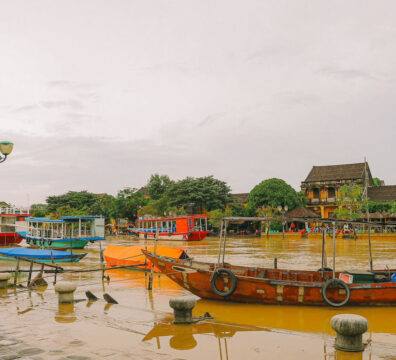
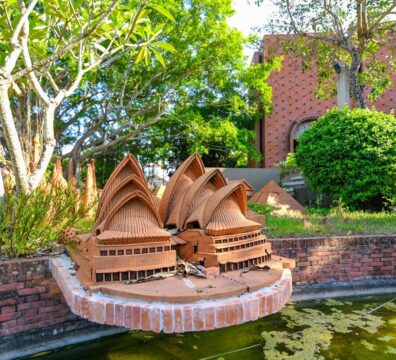



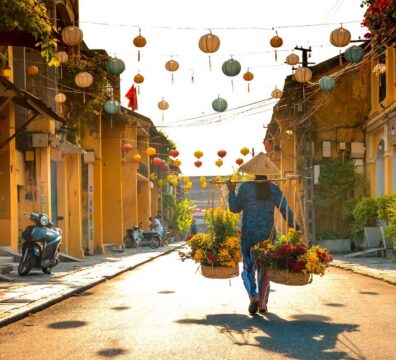


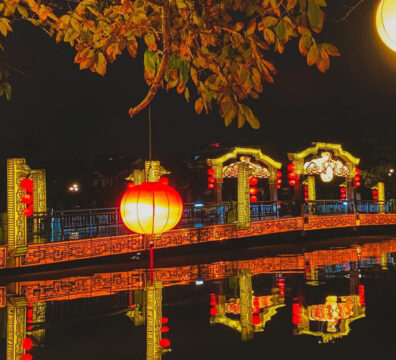
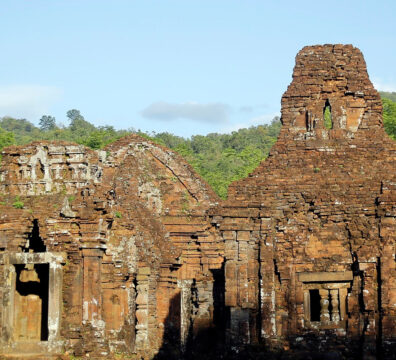


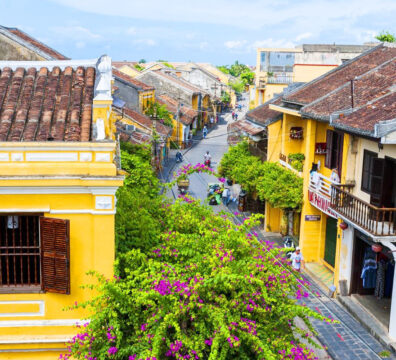







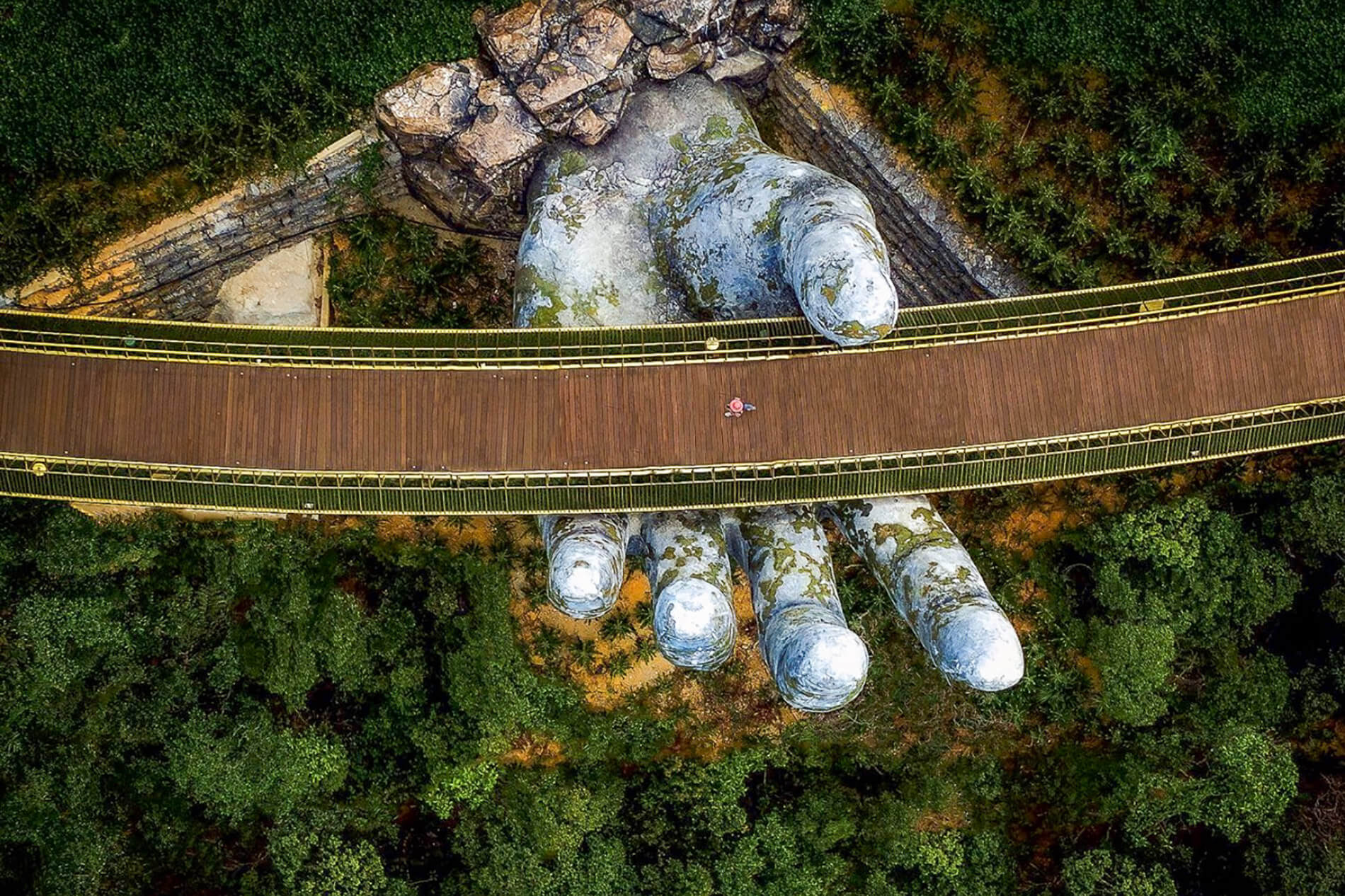







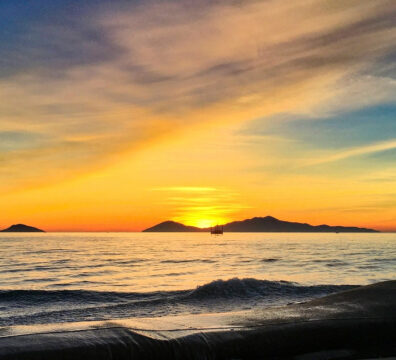



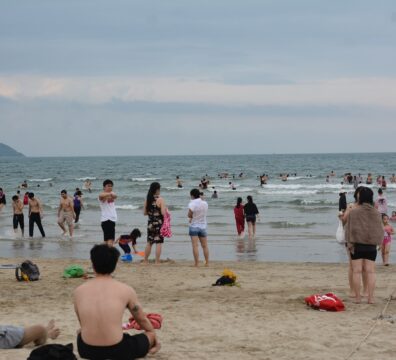

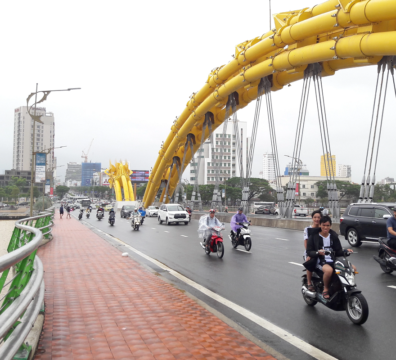









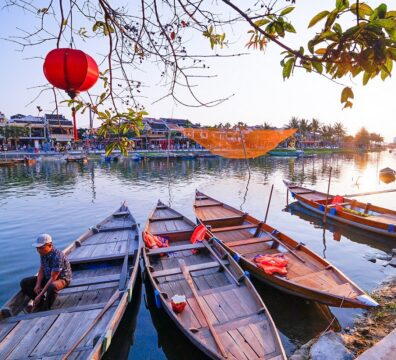


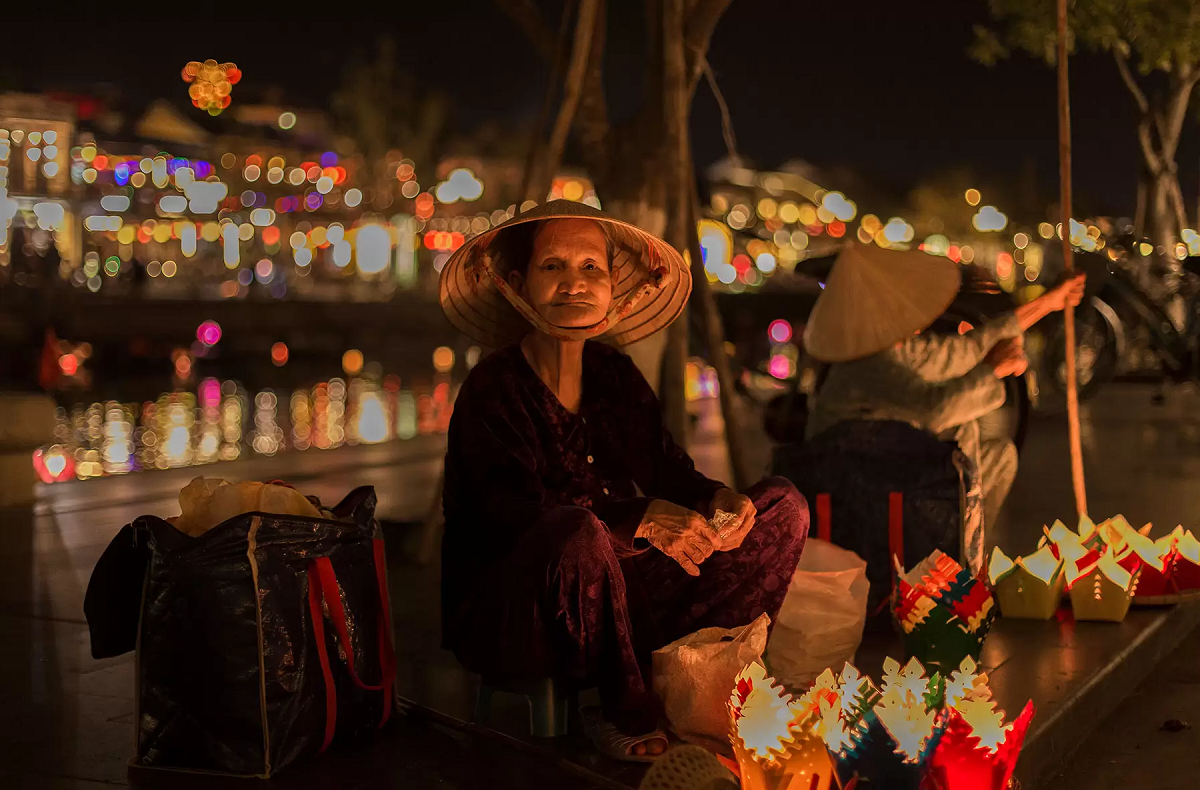


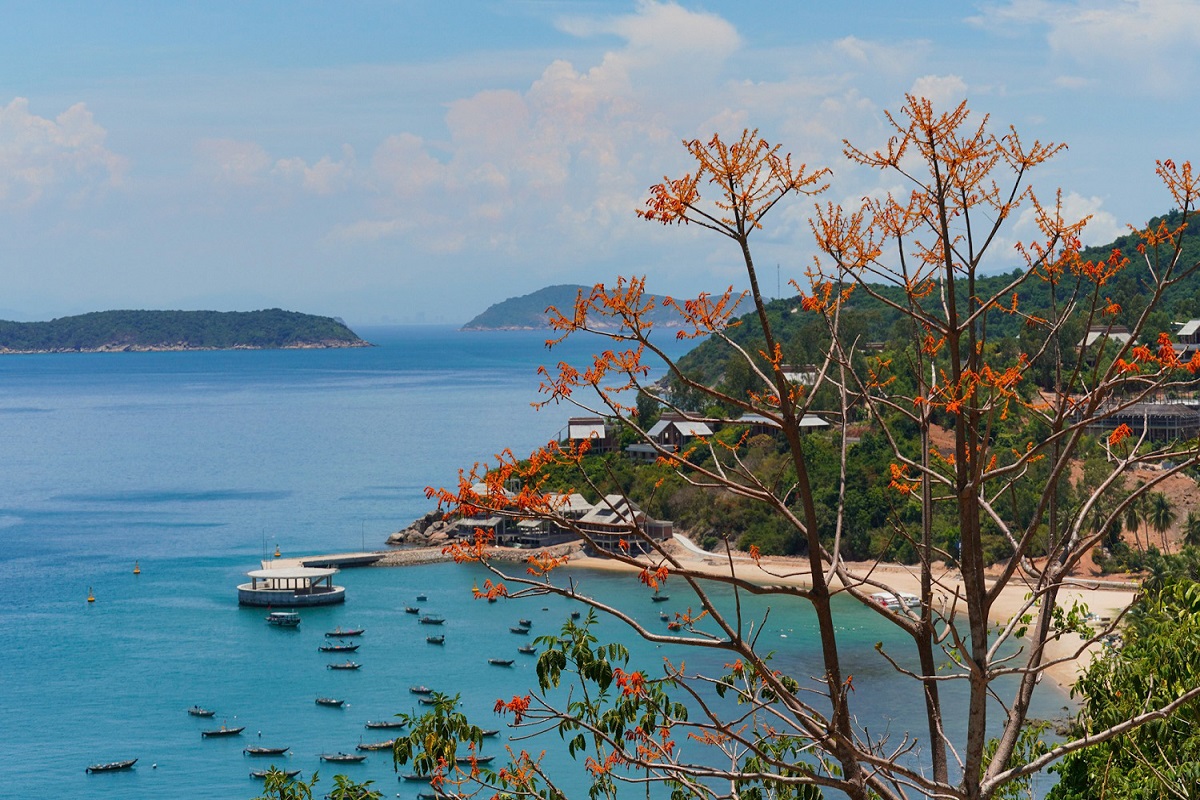








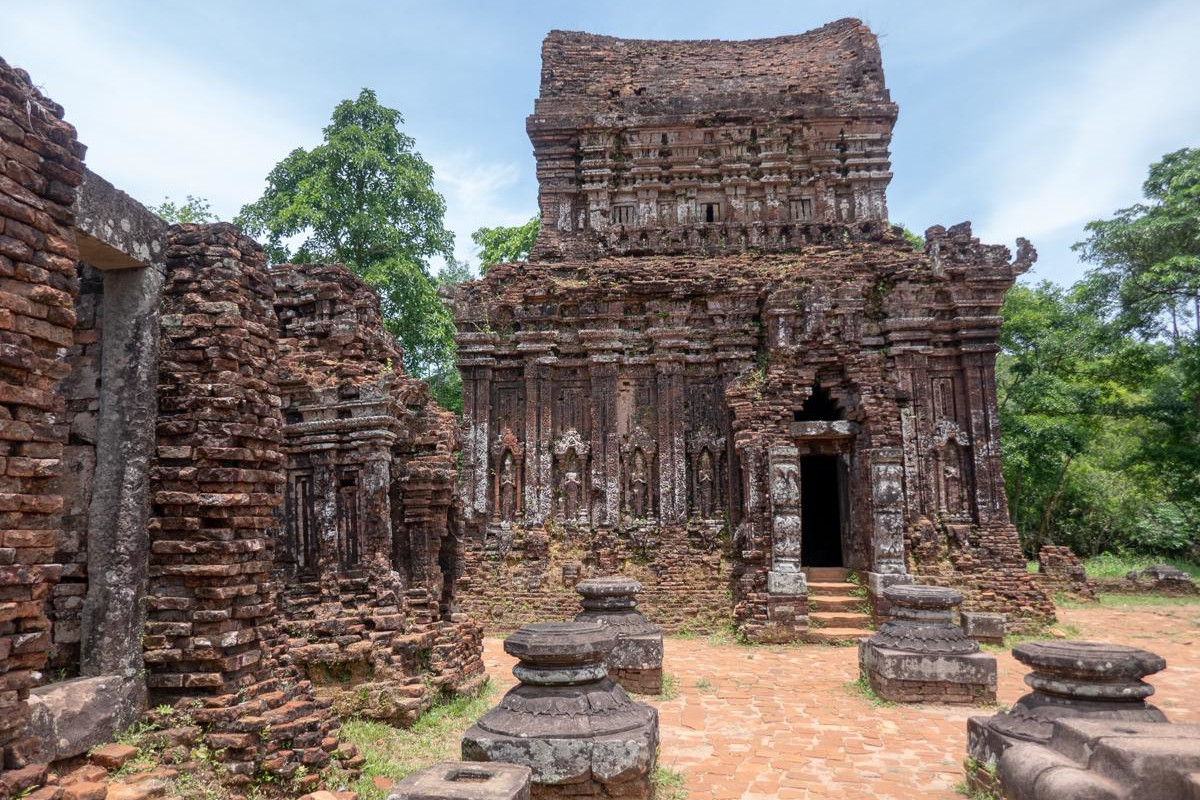

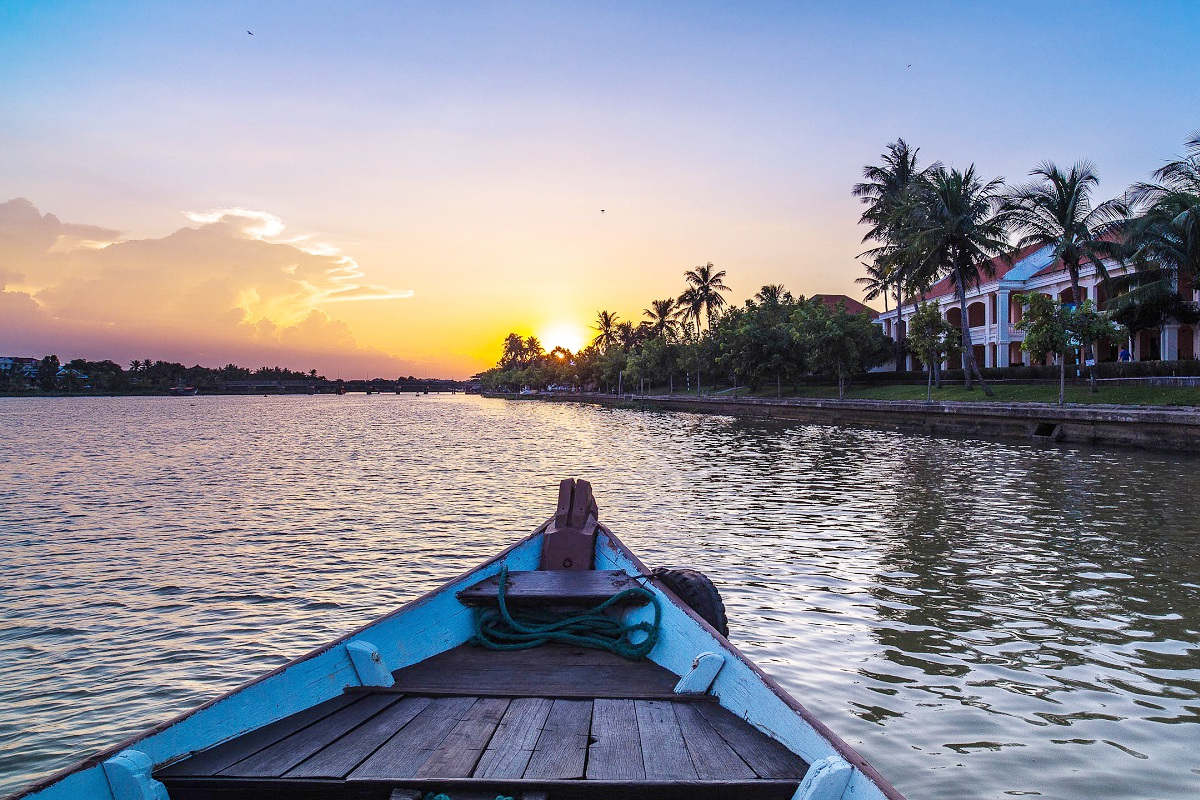





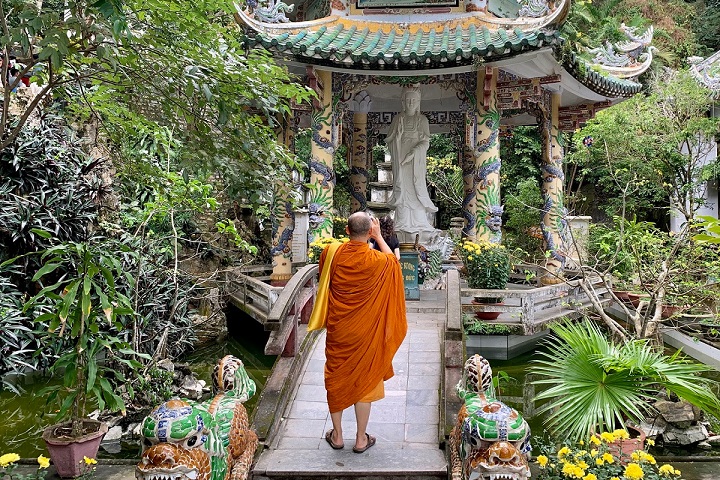


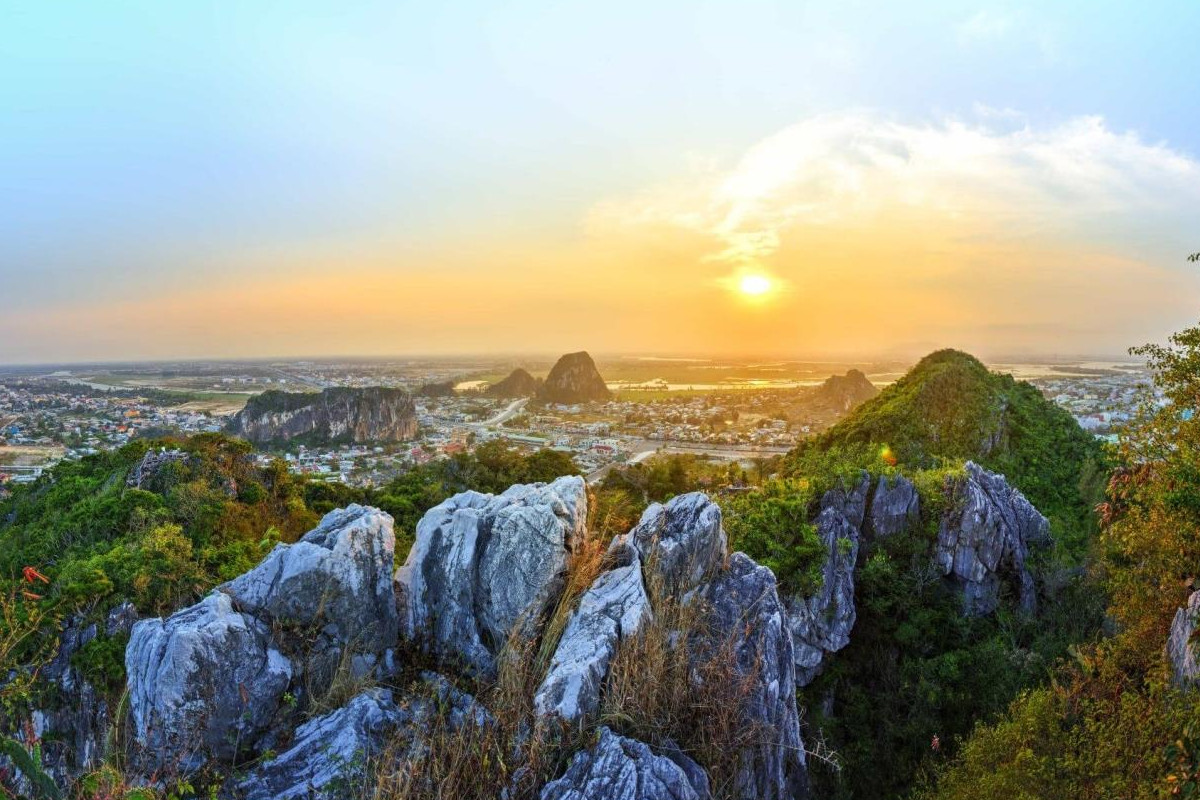
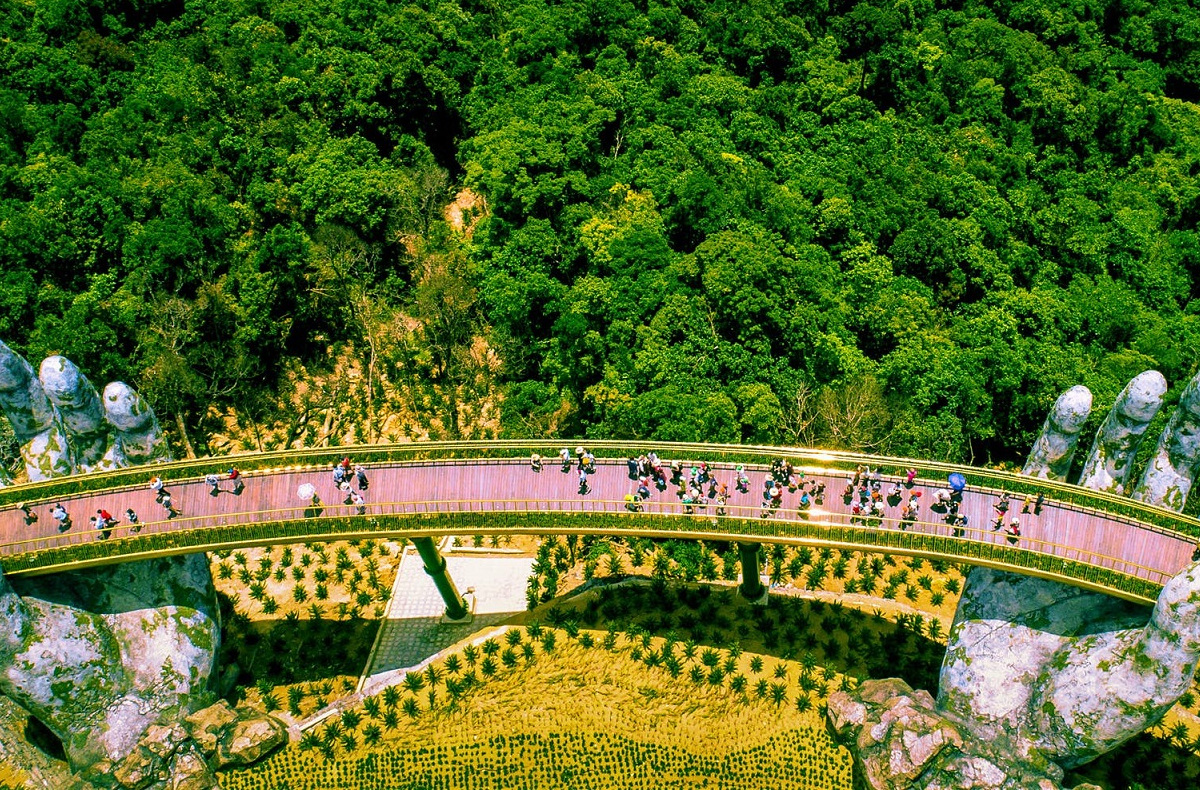










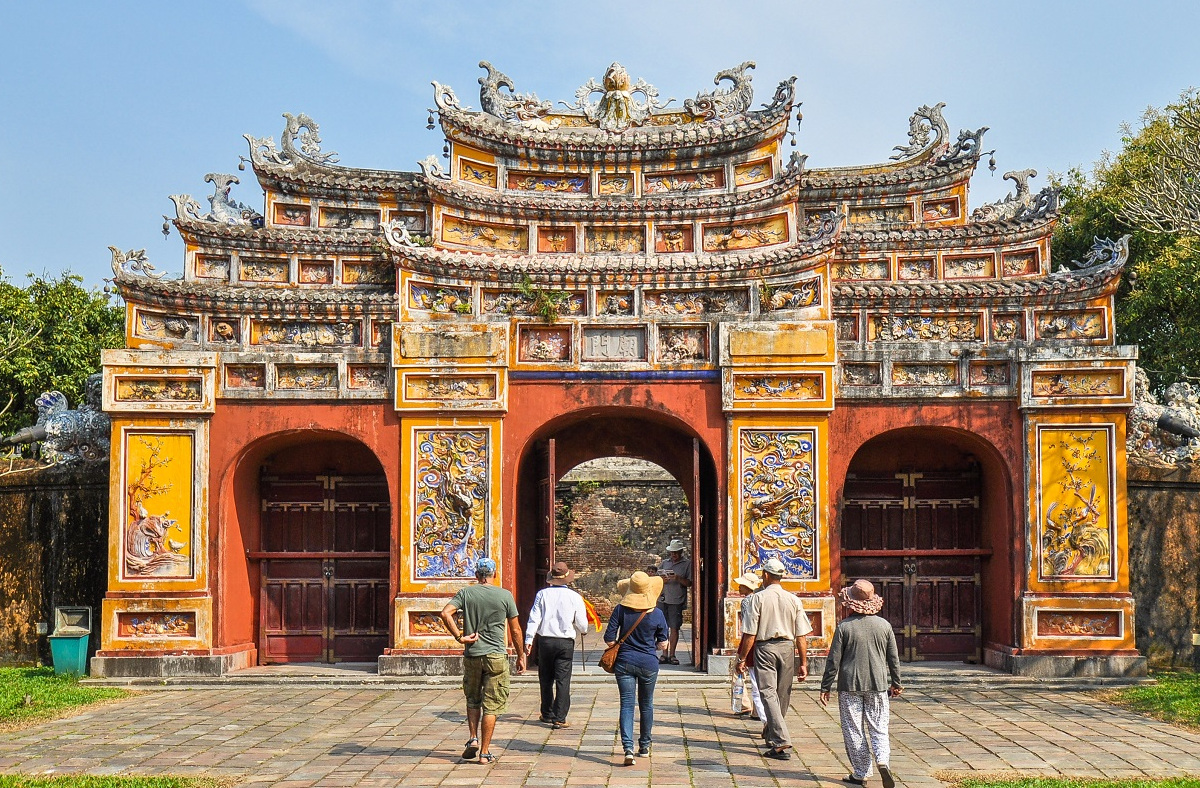








Leave a Reply